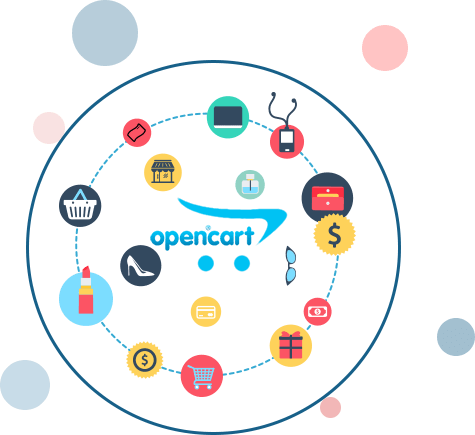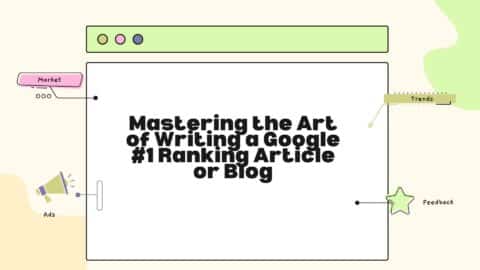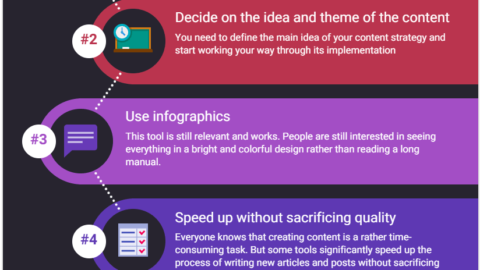Exploring OpenCart Development: Building E-Commerce Excellence
OpenCart is a full-featured and open source e-commerce platform that offers a suite of tools to help you build robust online stores. The platform provides developers with an opportunity to create custom solutions and extensions tailored to the needs of their clients. In this article, we will explore various aspects related to building OpenCart storefronts, opencart developer and integrating different modules into your development environment. We’ll take a look at each aspect of e-commerce development including setting up the environment, understanding architecture and other aspects like extending functionality with modules. Working with databases and models as well as implementing payment gateways among others via Opencart development company help.
Table of Contents
What is OpenCart web development?
When installing payment gateways in OpenCart, it is important to ensure compatibility with the platform and the specific version you are using. Additionally, you should consider security measures, such as using SSL encryption, and configure the gateway settings correctly to enable seamless and secure online transactions.
Is OpenCart still working?
OpenCart is still an active and functional e-commerce platform. However, please note that software and platforms can undergo updates and changes over time, so it is recommended to verify the current status and version of OpenCart from official sources.
Setting Up the Development Environment
The first step to developing an OpenCart website is to install the development environment. This includes installing all of the software necessary for you to develop and test your e-commerce website locally, before deploying it live on a server. If you’re seeking assistance, you can consider collaborating with experienced OpenCart development companies to streamline the process.
The OpenCart development installer provides an easy way to install several different pieces of software at once, including PHP, MySQL database server and Apache web server. However, if you already have these installed then feel free to skip this step!
The next step is setting up your database. This will store all information related to products sold through your store such as product names and descriptions. As well as customer details such as address information or order histories. You can either use an existing database or create one from scratch using pgAdmin III (a tool provided by PostgreSQL).
Once this has been done we need some way of accessing our newly created database. So let’s install phpMyAdmin which provides us with a web interface for managing databases over HTTP protocol rather than using command line tools like psql etc…
Understanding OpenCart Development Architecture
To get a better understanding of what Opencart is, let’s go over some of its key features how Opencart company does it.
OpenCart development company is a PHP-based e-commerce platform that uses MySQL as its database engine and the Zend Framework as its core framework. It also has an open source community behind it with thousands of developers contributing to the project on GitHub. This means that if you need any help with your store or want to contribute yourself, there are plenty of resources at your disposal!
Customizing the Frontend
Customizing the frontend is an important part of building a successful e-commerce platform. Frontend customization includes adding new pages and content, customizing the look and feel of your site, and adding new features. OpenCart development company has a rich set of tools for frontend customization that will help you build an amazing user experience for shoppers on every device they use to access your store.
Extending Functionality with Modules and Extensions of OpenCart Development Companies
You can extend your OpenCart store’s functionality by adding modules. Modules are software packages that add new features to your site, such as a calendar or shopping cart. They’re easy to install and configure. And they don’t require any programming knowledge you simply install them from the admin panel. (a process similar to installing an app on Android).
Modules can also be added from within your own code or through extensions (third-party apps) via Opencart developer.
Working with Databases and Models
In Opencart, models are the core of any application. They define how data is stored in the database and they can be used to create, update and delete records in the database. In this section we will learn how to use models for CRUD operations (create, read, update and delete).
Model files are located under /opencart/model/model_name directory by default but you can move them anywhere on your server if needed. You should always make sure that your custom model files has .php extension otherwise it won’t work properly!
Developing Backend Functionality
The backend is the part of your website that you don’t see, but it’s really important. The backend is where all of your data lives, and it’s what powers the frontend (the part that customers interact with).
In this section, we’ll go over some of the basic functions of OpenCart backends and how to develop them.
You’ll need to know how to use PHP if you want to develop a backend for OpenCart that means learning how variables work, how arrays work, etc. We recommend taking an online course or reading a book like “[PHP] Programming Fundamentals” by Caleb McDaniel if this stuff seems foreign to you!
Implementing Payment Gateways During OpenCart Development
Payment gateways are the most important part of an e-commerce store because they are the gateway to your customers’ credit cards. Payment gateways can be implemented using a module or custom code, depending on your needs and preferences.
For example, if you want to implement Stripe as a payment gateway in OpenCart then it is recommended that you use the Stripe module for OpenCart which allows you to easily configure all necessary settings without having to write any code yourself! However if you want more control over how things work or just like working with code then implementing one as a custom module would be better suited for this purpose instead (this will also help keep everything organized).
Ensuring Security and Performance
It’s important to host your site on a secure server. You should also use a CDN (Content Delivery Network) for hosting static files, like images and javascript libraries. HTTPS ensures that all page requests are encrypted, which protects against snooping or tampering by third parties during OpenCart development.
If you want to speed up page loading times, use caching to store frequently-used content in memory for quicker access later on. You can do this either with an external service like Cloudflare or by setting up your own caching server using Varnish or Nginx. Either way, it’ll help keep things running smoothly!
Testing and Debugging
Testing and debugging is a crucial part of the development process. It’s important to test your code before going live, but there are many other reasons why testing is so vital.
Security
Make sure that your store doesn’t have any security holes that hackers can exploit. Such as flaws in the shopping cart or checkout process.
Performance
Ensure that pages load quickly by running performance tests on each page before launch, looking for bottlenecks and areas where speed could be improved (for example, by compressing images).
Accuracy
Ensure accuracy with automated checks such as unit tests or integration tests these will catch errors like typos before they become visible to customers during opencart development.
Compliance
Ensure compliance with regulations such as GDPR (the General Data Protection Regulation). It requires companies who collect customer data to protect it with strong encryption methods such as HTTPS encryption or PCI-DSS compliance.
Optimizing User Experience in OpenCart E-Commerce Websites
A great user experience is essential for a successful online business. A good user experience leads to higher conversion rates, which means you’ll be able to sell more products and services. The good news is that OpenCart provides all the tools you need to create an excellent user experience on your e-commerce website.
The first step in optimizing your OpenCart e-commerce site’s UX is understanding how users interact with it. Users can interact with your store in two different ways: through desktop computers or mobile devices (phones or tablets). When designing an Opencart theme, it’s important to optimize each page. So that both types of users will have an equally good experience when browsing through them. But this means thinking differently about how each group interacts differently with their device!
Utilizing Data Analytics for E-Commerce Growth in OpenCart
Data analytics is an important part of any business. With the right tools, you can gain valuable insights into your customers’ behavior and make informed decisions on how to improve your e-commerce store.
The importance of data analysis has been recognized by many online retailers as well. These are investing heavily in this field. In fact, some companies like Amazon have built their entire business model around gathering customer information in order to provide better products and services at lower prices than competitors do.
Data analytics tools allow you to track everything from customer transactions through payment gateways (such as Stripe or PayPal) all the way up until conversion rates on specific pages within your website or application. You’ll even be able to see which keywords people searched for before finding their way into your store!
OpenCart development is a great way to build an e-commerce platform that delivers value for your customers.
OpenCart development is a great way to build an e-commerce platform that delivers value for your customers.It is an open source shopping cart solution with over 1 million downloads and has been used by thousands of businesses worldwide. It’s easy to use, flexible, customizable and affordable. All the things you need from your eCommerce platform!
OpenCart development can help you create a unique online store that meets your needs perfectly.
Conclusion on OpenCart Development
In this blog post, we’ve explored the world of OpenCart development and working with an opencart developer. We’ve looked at how it can help you build a successful e-commerce business and how to get started with it. OpenCart has been around for more than 10 years now. And is one of the most popular open source shopping carts in the world today. So there’s no question about its value as an option for your online store.

With more than 20 years of progressive experience as Program Manager and Project Manager had led complex IT projects/programs in a wide variety of industries in America, Latin America & Italia.
Mario Bisson Andini is an advanced Program Manager who is the founder of Bisson Training.












